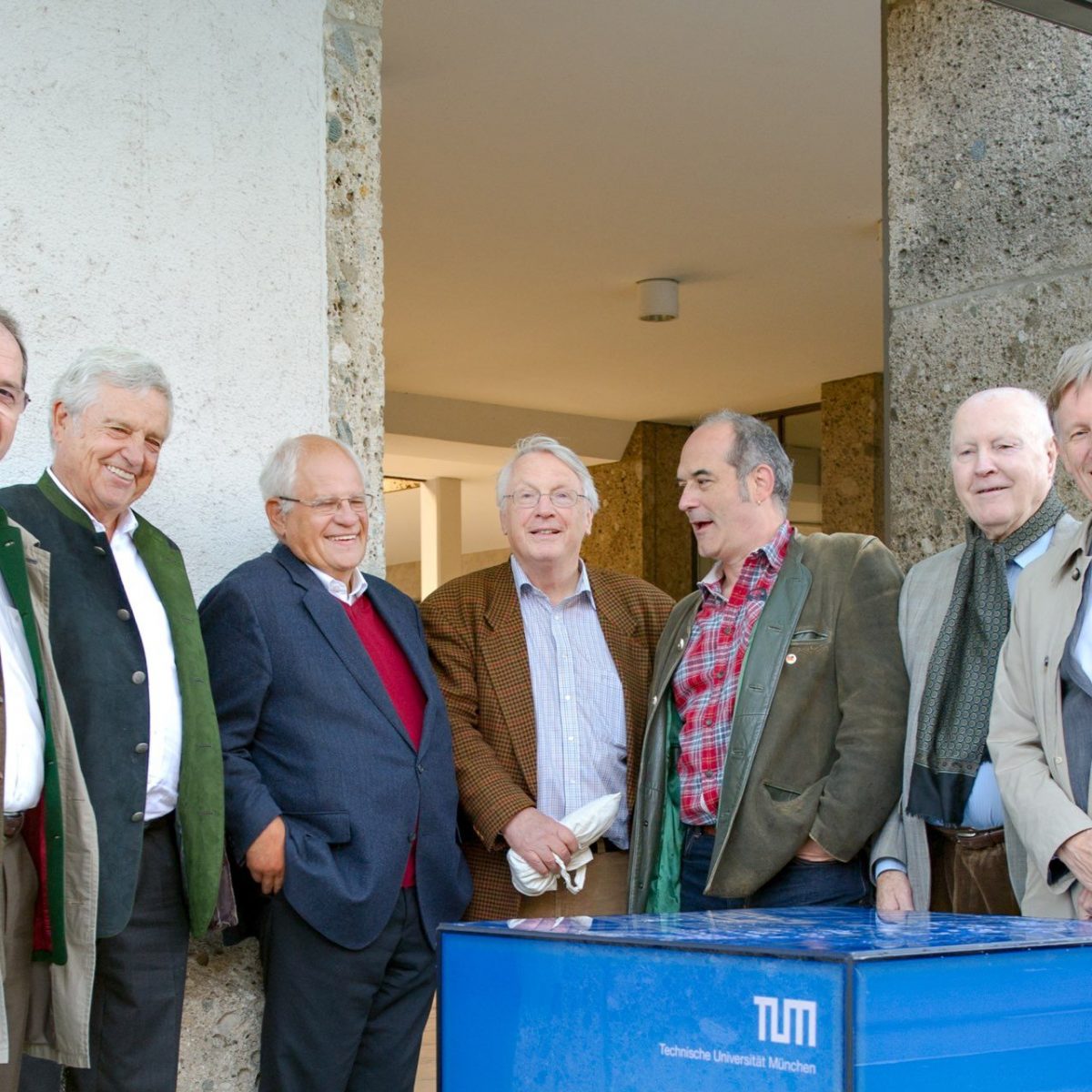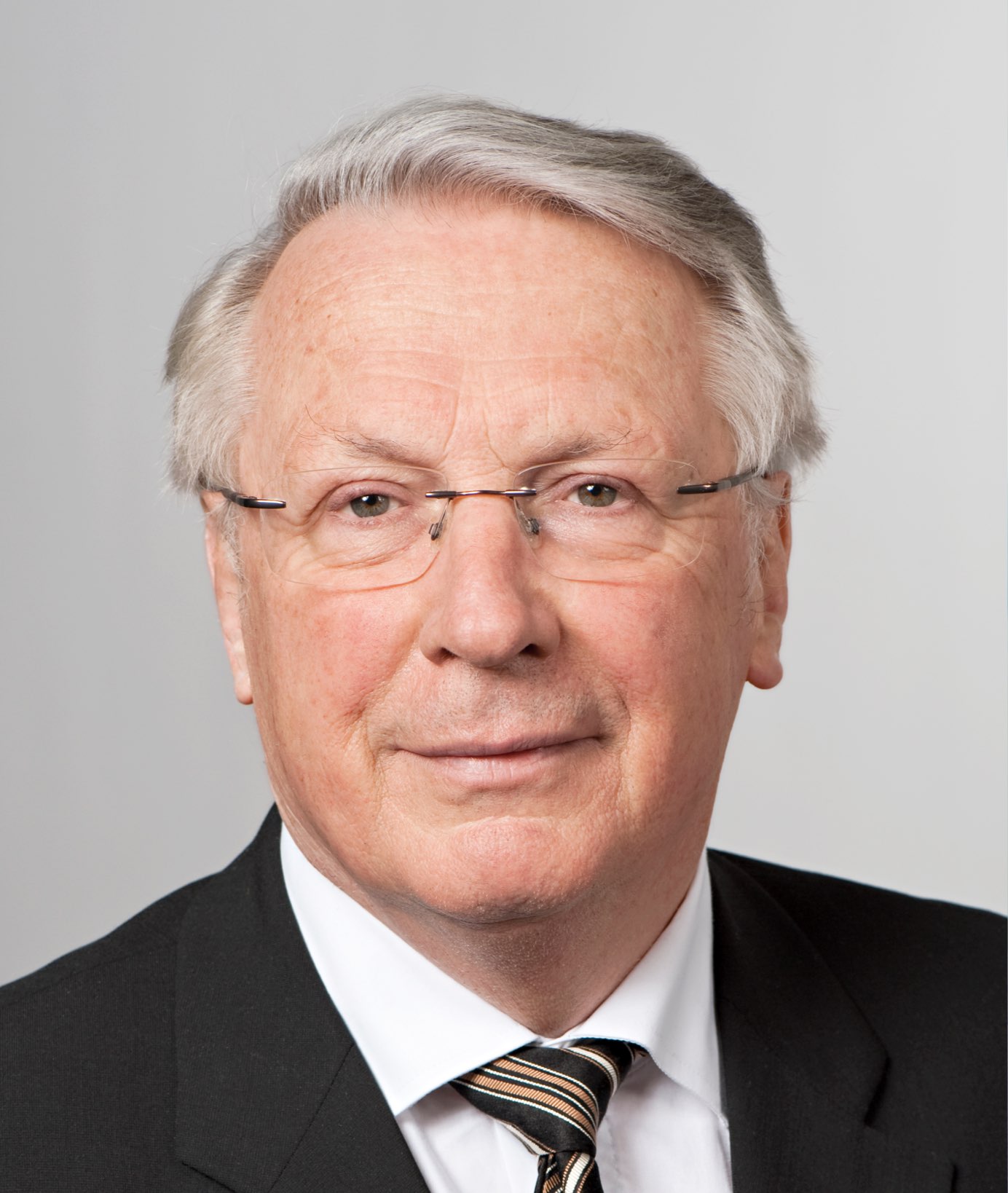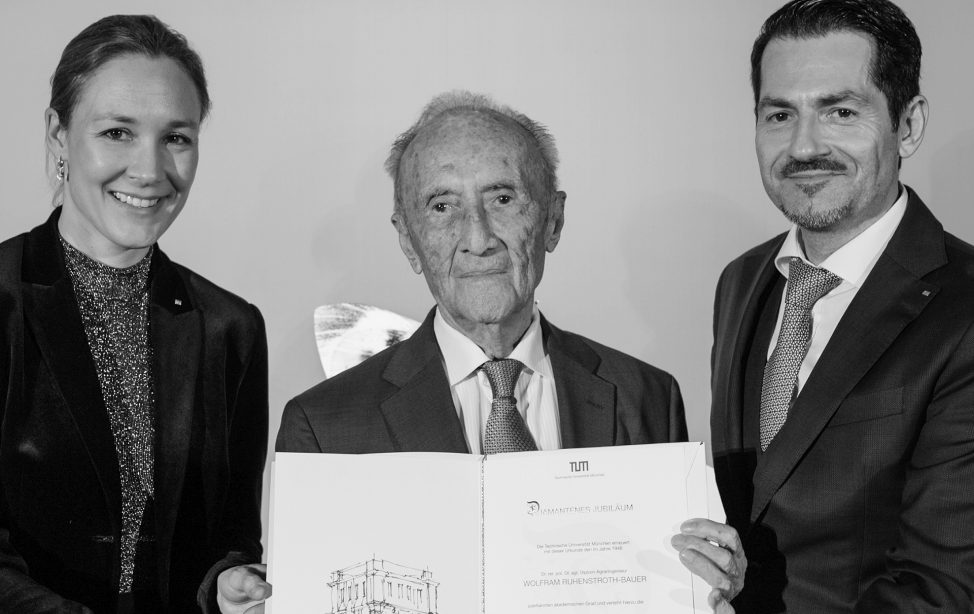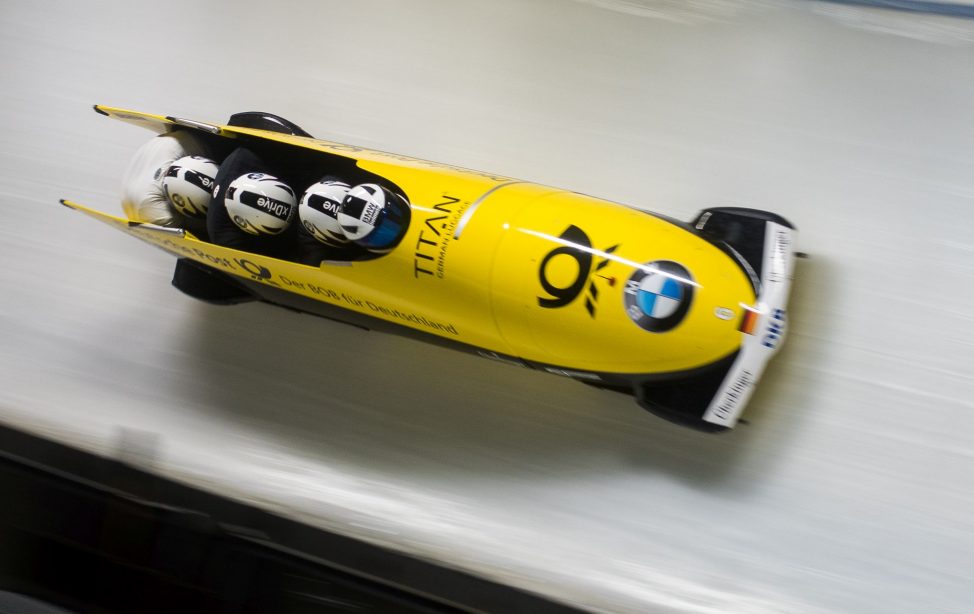
At TUM Manfred Kleber (center), here together with other Emeriti of Excellence, has appreciated the intellectual environment since his student days: from left to right Prof. Dr. Jörg Eberspächer, Prof. Dr. Georg Färber, Prof. Dr. Joachim Hagenauer, Prof. Dr. Manfred Kleber, Full Professor Prof. Dr. Klaus Diepold, Prof. Dr. Erich Sackmann, Prof. Dr. Michael Molls (Image: Andreas Heddergott/TUM).
Manfred Kleber initially wanted to study Chemistry after finishing school. But then he met a Physics student, the future Heidelberg professor Heinz Horner, who, smoking a pipe, got him interested in Physics as a degree programme. And finally, his Physics teacher advised him to study at TUM and to benefit from the application-oriented training there. Manfred Kleber enrolled here in 1961, which was a decision that influenced him decisively not just scientifically but also personally.
In search of role models
As a native of Munich, he quickly came to appreciate his hometown as a city of science. In Garching the first West German research reactor was in operation and especially in the 1950s and 1960s many top-class scientists were called to TUM. In the intellectual environment of experts in the field, such as Professor Heinz Maier-Leibnitz, who took over the Chair of Technical Physics in 1952, and Nobel Laureate Professor Rudolf Mößbauer, who had been Professor of Experimental Physics since 1964, he received constant encouragement: “These were the scientific role models that you look for as a young physicist”, says Manfred Kleber.
Manfred Kleber’s time as an intern at the Max Planck Institute for Physics and Astrophysics with Professor Werner Heisenberg as director also left a special impression on him. He remembers his difficult but enthusiastically received lecture on quantum field theory, and even more so the scientists that Heisenberg invited there, such as Carl Friedrich von Weizsäcker and Richard Feynman. “I love being surrounded by smart people, whom you can learn from”, Manfred Kleber still says today. “Because if you don’t continue learning, you have already lost.”
I love being surrounded by smart people, whom you can learn from.
He received the Willis E Lamb Award for Laser Science and Quantum Optics – together with the well-known Nobel Prize winner Roy Jay Glauber – in 2006 for his scientific contributions to tunnel phenomena in Microphysics. “But receiving awards was never what drove me in my work”, Manfred Kleber says. “For me it was always solely about following my fascination with the Natural Sciences.”
Guided tours through his alma mater
Manfred Kleber has had emeritus status since 2007, however he is anything but retired. As an Emeritus of Excellence, he continues to pass on his wide-ranging knowledge in a number of activities at TUM. For almost twenty years, he has been a member of the jury for selecting the best Bavarian seminar papers, supporting students, who are studying to be teachers, with his revision course in Theoretical Physics in their preparation for the written state examination, and introducing interested students to physics topics at the annual Whitsun Academy in the Schülerforschungszentrum Berchtesgadener Land, a joint institution of TUM and Berchtesgadener Land. Last but not least, Manfred Kleber occasionally works as a student advisor and gives teachers and students guided tours through his Alma Mater. He advises all his young protégés to always surround themselves with clever minds. “The right conduct enables mutual understanding and encouragement, which is so important”, says Manfred Kleber.

Manfred Kleber (Image: Astrid Eckert/TUM).
Diploma Physics 1966, Doctorate 1969
Manfred Kleber completed his degree in Physics at TUM in 1966 and received his doctorate in Theoretical Nuclear Physics in 1969. From 1972 to 1973, he was a post-doctoral fellow at the Lawrence Radiation Laboratory of the University of Berkeley. After working as an assistant at the TUM Faculty of Physics, he first of all went to the University of Cologne in 1977. From 1980 until his retirement in 2007, he was Professor for Theoretical Physics at TUM in Garching.
From 1989 to 2001, he worked as a subproject leader in a DFG Collaborative Research Center on mechanisms for electron and atom transfer in the scanning tunneling microscope. Manfred Kleber was a visiting scientist at the University of New Mexico in Albuquerque, at the Weizmann Institute of Science in Israel, at the African Institute for Mathematical Sciences in South Africa, and at Texas A&M University, where he maintains a long-standing friendship with Professor Marlan O. Scully.
He is a member of the German Physical Society as well as a member and expert of the American Physical Society. In 2006, he was awarded the Willis E. Lamb Medal for his outstanding scientific contributions in the field of quantum optics. Manfred Kleber is married and has two adult children.
Professor Dr. Manfred Kleber was appointed TUM Emeritus of Excellence by TUM president Prof. Dr. Wolfgang A. Herrmann in 2012.


